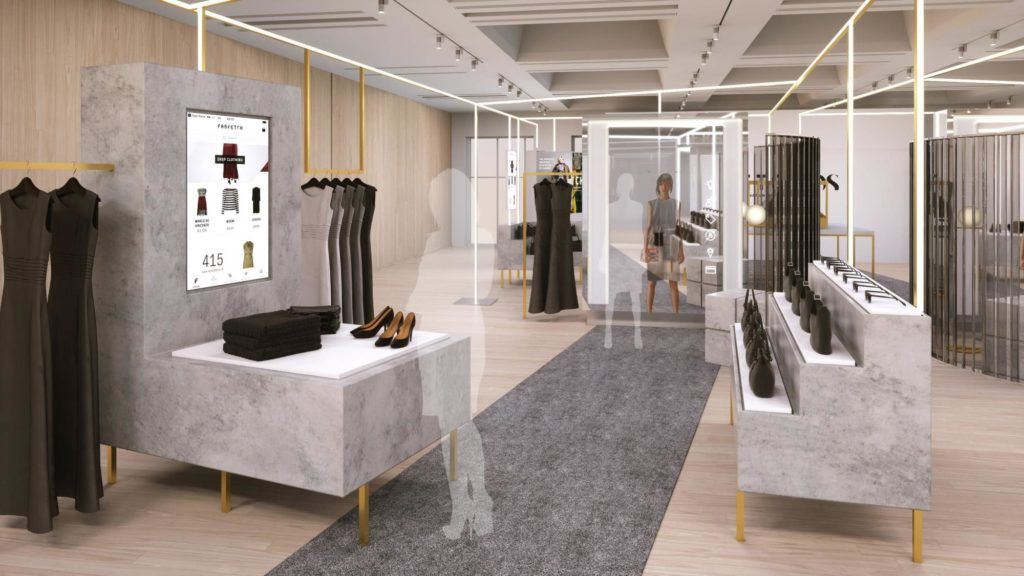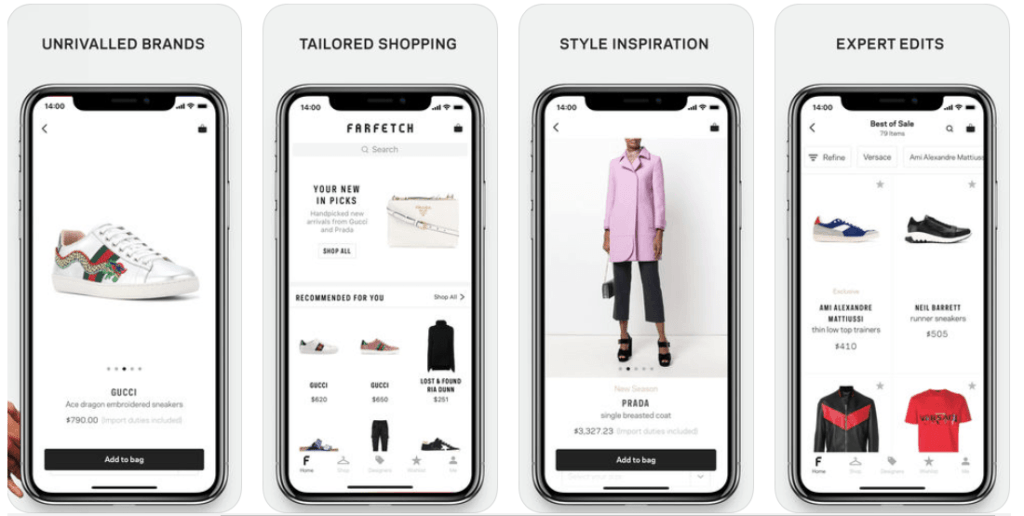ONLINE LUXURY FASHION + MACHINE LEARNING = A “FARFETCH” EXPERIENCE?

Farfetch is not your typical luxury fashion company. It is hard to imagine from its glitzy storefront that lying at the heart of the company is a vision to use technology and artificial intelligence to transform retail and fashion, industries that were under the influence of creative directors, not data scientists. With $8 billion dollar valuation at IPO in 2018, Farfetch is being seen as a successful “unicorn” technology company.
WHAT IS FARFETCH?
Farfetch is an online luxury fashion retail platform that seamlessly connects consumers with over 900 high-end fashion boutiques all over the world. Many analysts have called Farfetch the “Amazon” of luxury fashion due to its marketplace model which enables the company to hold no inventories, stores, warehouses or other physical assets that usually weigh down retail margins. As of September 2018, more than 3,200 brands are available on Farfetch’s marketplace, ranging from heritage brands to emerging designers. The platform also had ~1 million active customers and handled ~$1bn GMV [1].
Unlike traditional luxury retailers, Farfetch can collect a huge amount of data through its multiple interactions with users with their website and mobile apps, and through this dataset, can use machine learning to automate decision making on merchandizing, targeting, curation and feedback. As of June 2018, the company had 631 engineers and data scientists developing and enhancing the data interactions on their platform (~35% of their total headcount). Their technology expense also went up ~180% from the previous year, demonstrating a serious commitment to building their data capabilities. [2]
THE POWER OF PERSONALIZATION
On the surface, the importance of data may not seem obvious to the fashion industry. However, Farfetch quickly realized that data-empowered personalization is key to customer discovery and retention.
In the world of online retail, consumers are often overwhelmed by unlimited options, which may not be relevant to them at all. This is particularly troublesome for luxury retail, because selling luxury is not just about selling a product, but also the emotion, the exclusivity catered to a specific customer. Thanks to the personalized enhancements, now Farfetch (and to a certain extent, other online retailers) can “generate precise product search results that draw attention to products consumers might not have realized they wanted, or virtual storefronts that display information tailored to individual shoppers based on their unique characteristics and preferences”. [3]
Indeed, in 2017, Farfetch partnered with Certona, an AI-empowered omnichannel personalization solution for brands and retailers. With Certona capabilities, Farfetch can make sophisticated product suggestions to their customers in real time and across all customer touch points. This was expected to drive higher engagement, conversion rates, and customer lifetime value. The results were promising. When Farfetch used Certona on its own platform, it saw a 10% increase in click-through rates in personalized email marketing.[4] Inside the company, according to Jose Naves, Farfetch’s CEO and founder, their data scientists are also “looking at developing models to measure propensity to go to second order, lasting likelihood, and scoring customers based on levels of engagement in various scenarios”.[5] These insights can particularly help Farfetch to target customers better, from both acquisition and retention perspective.
CLICKS and MORTAR: Store of the Future
Traditional retail will be dead, but long live retail. Farfetch is actively selling the concept “Store of The Future”, or its vision for Augmented Retail. Farfetch’s first physical store was opened in London in 2017, bringing the kind of futuristic experience that features an universal login recognizing a customer as (s)he checks into the store; an RFID-enabled clothing racks detecting which product the customer is browsing and automatically populating the wishlist; a digital mirror to view the wishlist and get items in different sizes and colors; a mobile payment experience similar to that of the Apple store.[6] Of course, all of the data from those activities will be captured and connected to Farfetch platform, making it easy for Farfetch to develop a more complete view of a customer, both online and offline. That level of granularity can take personalization to another level, and drive operational efficiencies to brands and boutiques on Farfetch’s platform because now they know exactly what kind of products and services that their customers want, and when they want it. And while many were still casting doubt over the potential of this concept, CHANEL announced a multi-year global innovation partnership with Farfetch to develop a range of initiatives to deliver a superior consumer experience both offline and online.

OUTSTANDING QUESTIONS FOR FARFETCH:
- The tradeoff between personalization and privacy: How much is too much? Are those very specific recommendations truly making a difference to customers?
- In-store technology: In theory, Farfetch’s in-store innovations sound very cool, but their results are unproven. It is unclear whether they are short-term PR opportunities or can drive sales and engagement with customers.
Word count: 796 words
References:
[1] FARFETCH Prospectus dated September 20, 2018. Link: https://d18rn0p25nwr6d.cloudfront.net/CIK-0001740915/ba586dfa-feb3-4069-845e-31dd1884624f.pdf.
[2] Ibid.
[3] Business of Fashion and McKinsey and Company. “The State of Fashion 2018”. https://www.businessoffashion.com/articles/news-analysis/the-state-of-fashion-2018
[4] Chloe Rigby. “Farfetch and Certona collaborate on AI and personalisation”. https://internetretailing.net/themes/themes/farfetch-and-certona-collaborate-on-ai-and-personalisation-15589
[5] Pamela Danziger. “Is Farfetch founder Neves the Jeff Bezos of fashion?”. Forbes. September, 21 2018. https://www.forbes.com/sites/pamdanziger/2018/09/21/is-farfetch-founder-neves-the-jeff-bezos-of-fashion/#29463794939a
[6] Vikram Kansara. “Inside Farfetch store of the future”. Business of Fashion. April, 12 2017. https://www.businessoffashion.com/articles/bof-exclusive/inside-farfetchs-store-of-the-future




Farfetch is such an interesting company – I learned so much from this on what they are investing in. I agree that they are broadly investing in the right things and that customers are increasingly expecting personalization / customization. As for your question about privacy, I was curious to learn more about exactly what pieces of data Farfetch is collecting. If it’s shopping data on their own site, it feels like fair-game; if they start reaching further into collecting browser history through cookies and Facebook-tracking, I could see the concern. However, my question back would be: is there a true reason to be concerned about privacy, or is this a temporary concern / apprehension about a new technology similar to how individuals might’ve felt about advertising on Google / Facebook or even the internet as a whole when it first emerged in the 90’s?
What a fascinating article! Farfetch has done an incredible job incorporating data analytics into its ecommerce platform. From a vendor perspective, however, a frustrating aspect when working with Farfetch is (1) it does not share its data, which dilutes individual brand incentives to partner with Farfetch; and (2) the presentation specialty boutiques offer of certain brands may not align with that brand’s visual merchandising standards. For example, if Chanel sells handbags to boutique A, boutique A is the partner who offers Chanel handbag photos to Farfetch, not Chanel. This has created much tension between brands, boutiques and Farfetch. If Farfetch is to build a sustainable luxury model (and therefore maintain its high volume of data inputs), I expect they will have to address this conflict and work to resolve it.
The other doubt I have regarding Farfetch is the scalability of its “Store of the Future.” Farfetch has marketed this concept for years, but has only one store to show for it. Perhaps it will increase its number of partnerships from exclusively Chanel — but if not, I doubt this concept will have much impact on the retail industry.
This was an interesting look at what I believe to be the best application of machine learning for retail – using for the purpose of customer conversion and retention. Regarding the question of privacy, it seems like consumers at this point are used to semi-invasive collection of data, and while they may not love it, they are used to it and don’t fight against it. For example, people have various examples of times that they received targeted advertisements shortly after having a conversation about a brand, which indicates that their phone listened to the conversation. People share plenty of experiences like this, but don’t seem to care about stopping it.
Regarding in-store technology, I think Farfetch’s approach in creating a store of the future is great, but its success seems contingent on having a consumer who is already quite involved in Farfetch’s platform, and also having a larger number of customers so that you can aggregate the data and actually learn something that can turn into a prediction. With just one store and 1 million users, and with a high price point indicating that purchase frequency may not be very high, I am not sure that Farfetch can gather enough data to get a great return on their investment.